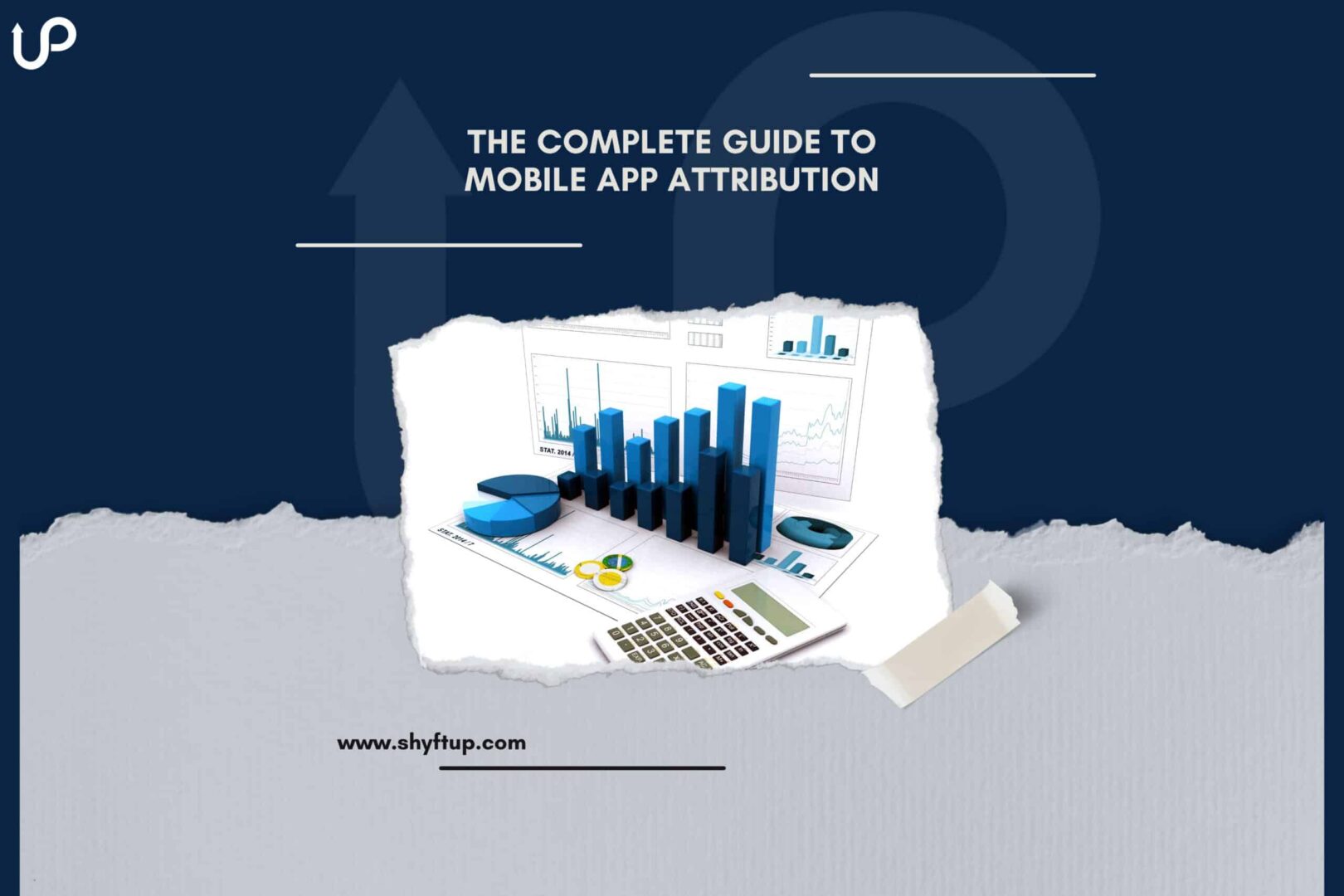
The Complete Guide To Mobile App Attribution
A lot of app developers and marketers today use mobile attribution to help them maximize their return on investment (ROI). With mobile attribution, you get crucial data to decide how you are going to change, improve, or sustain your overall marketing strategy.
Image source: Vecteezy
Today, you are going to learn what mobile attribution is, why it is important for your app strategies, and how to do mobile attribution.
What is mobile app attribution?
Mobile attribution is the process of identifying which marketing activity converts a user. As its name suggests, with app download attribution, you try to “attribute” or “give credit” to the channel that caused your users to do a specific action such as downloading or purchasing a product in your app.
A quick example of app install attribution
To better understand this, let’s have a quick example. A user can have tens of interactions with your app before finally downloading it.
With a simple tracking tool, you might easily identify that it is your landing page that caused him to download the app. Yet, in reality, that’s not really accurate.
Your user probably has seen your ads in the past. How about the social media posts you made? Perhaps, your user has read your blog. Maybe, they received your emails. All these could have influenced your user to finally make a decision to download your app.
That’s what mobile attribution is all about. It aims to determine which of your marketing strategies and the impact that they have on your user and cause them to perform your desired action.
What is the difference between mobile app install attribution and web attribution?
Obviously, before mobile attribution, there is already web attribution. Mobile app attribution works the same as web attribution. The underlying principle is the same. Both of them aimed to help marketers to determine which of their marketing strategies made an impact on their users.
Nevertheless, the main difference is that web attribution is done on the web while app attribution is done in mobile applications.
Another huge difference is the ease of gathering data. It is easier and less complicated to do web attribution than app attribution. The reason is that user identification is lost when that user moves from the web to the app. Aside from that, apps don’t usually have built-in cookies plus there are “walled gardens” that keep data strictly in just one app.
Why is mobile attribution important?
Here are the best reasons why mobile attribution is important:
1. Know the source of your users
The primary reason you should do mobile attribution is to know where your users are coming from. Mobile attribution helps you understand the journey that your users take before they download and use your app.
By having the right data about your user source, you can dramatically improve your marketing strategies. It tells you where to focus your efforts and improve how you allocate your budget.
2. Measure the success of your marketing effort
With mobile attribution, you can isolate each of your marketing networks and see which of them is the most successful. Aside from that, you can check each of your marketing campaigns and see which of them provides the best results.
Once you are able to measure your marketing effort, you also can compare them accurately. Remember, while you like to know which marketing campaign gives you the most number of users, it doesn’t automatically mean that’s the best campaign. There are times when some marketing campaigns give you fewer but more loyal, engaged, and profitable users.
3. Improve your marketing campaign
Perfecting your marketing campaign is a long process. You rarely would get it right on the first try. The beauty of mobile attribution is it helps you improve your marketing campaigns and even adjust your resources and efforts to optimize results.
How mobile attribution improves advertising campaigns
With the fierce competition in app stores today, you need solid and strong advertising campaigns. Your number one aim is to improve your app’s visibility in app stores so more people discover your app. You can do this by using the right keywords, placing keywords in the right places, improving screenshots, creating app previews, choosing the best app icon, and crafting compelling descriptions.
Mobile attribution can help you gather vital data to help you formulate the best advertising strategies. For example, mobile attribution can identify where your users came from.
Did they download your app after seeing your ad? Did they use your app after seeing your app listing page? Did they choose your app when browsing through the app store?
You can answer all these questions through mobile attribution. Basically, mobile attribution helps you know where your users are coming from and how they discovered your app.
Since you will have a better understanding of where your users are coming from and how many of them are coming from a specific network, you can better refocus your marketing efforts to maximize results.
Essential elements for mobile attribution
There are different elements for mobile attribution to be successful. These are the following:
- Touchpoints – touchpoints refer to the action of the user that will lead to in-app actions or app installs. Touchpoints can be impressions and clicks or other external events. There are three primary sources where touchpoint data are collected. These are tracking links, server-to-server (S2S) API, and referrer.
- Conversions – conversions refer to the in-app events, which may include purchases, installs, and add to carts. To track conversion, app attribution tools provide SDKs, which allow your app to send data to the attribution provider for any event that happens in your app. Aside from SDKs, S2S API can also be employed.
How does mobile app attribution work?
Mobile app attribution works in different ways depending on which tools and attribution models you use. Nevertheless, there are general steps that the mobile attribution process follows. These are the following:
- Set up mobile attribution tools.
- The user interacts with your app. This interaction can be as simple as reading your social media post or actually purchasing a product in your app.
- Every touchpoint comes with a unique ID that once triggered, will send specific details to the mobile attribution tool for recording. The details may include the user’s unique device identifier (IDFA or GAID), Internet browser, IP address, phone operating system, and timestamp.
- The user performs a conversion event, which can be downloading or doing an in-app purchase. This conversion event also comes with a unique ID that the mobile attribution tool tracks. The tool can also cross-reference or compare the data it has gathered the second time from the same user.
- The process is repeated as long as new users interact with your app.
- Once there is enough data collected or the set time is fulfilled, you will then receive the data for you to analyze.
Types of mobile attribution models
Mobile attribution comes in various models. Each model has its pros and cons. Thus, you should know which mobile attribution model you should use and how to do it.
To give you an idea, here are the most common mobile attribution models:
First click attribution
The first click attribution gives 100% of the credit to the first interaction of the user to your app. This model disregards the rest of the journey that the user takes.
Because of its limitations, the first click attribution is only used when you want to know what the first interaction of your users is with your app.
Last click attribution
The last click attribution is the easiest mobile attribution model to use. Because it is easy to use, a lot of marketers choose it.
As its name implies, last-click attribution credits 100% of its attribution to the final point of interaction of the user to your app before performing your desired action.
Position-based attribution
The position-based attribution considers both the first and final interactions of the user to your app before a conversion. It ignores the interactions that happen between the first and final interactions.
This gives you insights into which channels give you the best way of reaching your audience and how to convert them.
Linear attribution
The linear attribution considers all touchpoints and interactions users made with your app. So, whether your user is reading your blog, visiting your app website, or downloading your app, all these are taken into consideration. The linear attribution assigns equal credit to each touchpoint.
Time-decay attribution
The time-decay attribution is similar to the linear attribution model. However, instead of giving each touchpoint the same amount of credit, the time-decay attribution would give the highest percentage to the touchpoint that made the highest impact on the user’s journey.
Best mobile app attribution tools
It is nearly impossible to perform mobile app attribution without using a tool or software. At this point, you might be thinking of using a mobile app attribution tool. Here’s a list of them to give you a headstart:
- AppsFlyer
- Adjust
- Branch
- Singular
- Kochava
- Tenjin
- Upland Localytics
- Cake
- Trackier
- Madgicx
Not all mobile app attribution tools are equally made. They differ in their performance, features, and pricing. Thus, you may want to take more time in choosing the right tool for you.
Improve your mobile app attribution
Mobile app attribution can easily become an overwhelming task. Even if you already have the right attribution tool, you still need to have the expertise to properly interpret and analyze the data you have gathered.
Thankfully, you don’t have to do this alone. You can always get in touch with ShyftUp to improve your overall mobile app attribution process.
ShyftUp is the best user acquisition agency that has the right experience, knowledge, and tools to help you with mobile attribution. Contact ShyftUp today and see how you can further improve your mobile app!
What are the different mobile app attribution models?
The most common mobile app attribution models include first-click attribution, last-click attribution, position-based attribution, linear attribution, time-decay attribution, and view-through attribution.
What are the disadvantages of mobile app attribution?
Mobile app attribution has difficulty measuring return on investment. Aside from that, mobile attribution can’t effectively measure offline data relevant to conversions.
How to calculate marketing attribution?
The way to calculate marketing attribution would depend on the model you used. Some models assign 100% of the credit to one touchpoint while others would distribute them evenly or by weight of influence.
What is mobile app attribution?
A quick example of app install attribution
What is the difference between mobile app install attribution and web attribution?
Why is mobile attribution important?
1. Know the source of your users
2. Measure the success of your marketing effort
3. Improve your marketing campaign
How mobile attribution improves advertising campaigns
Essential elements for mobile attribution
How does mobile app attribution work?
Types of mobile attribution models
